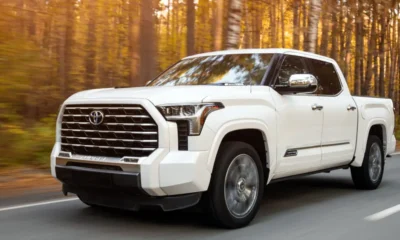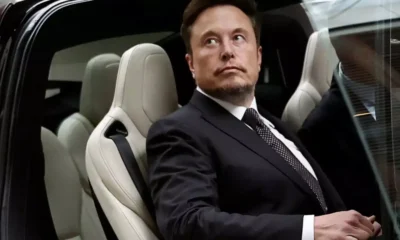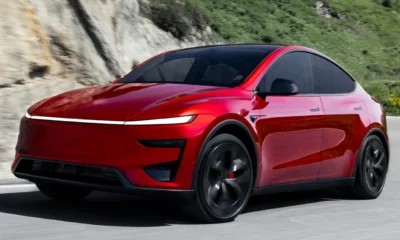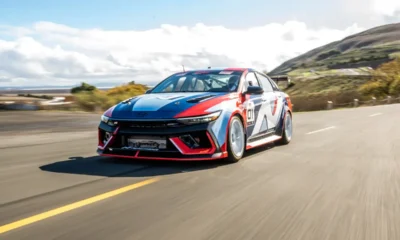Automobile
Hyundai Issues Major Recall of 135,000 Santa Fe SUVs Over Fire Risk — Here’s What You Need to Know
The automaker confirmed that several 2024 and 2025 Santa Fe models may have a faulty starter motor terminal, posing an increased risk of fire during a crash.
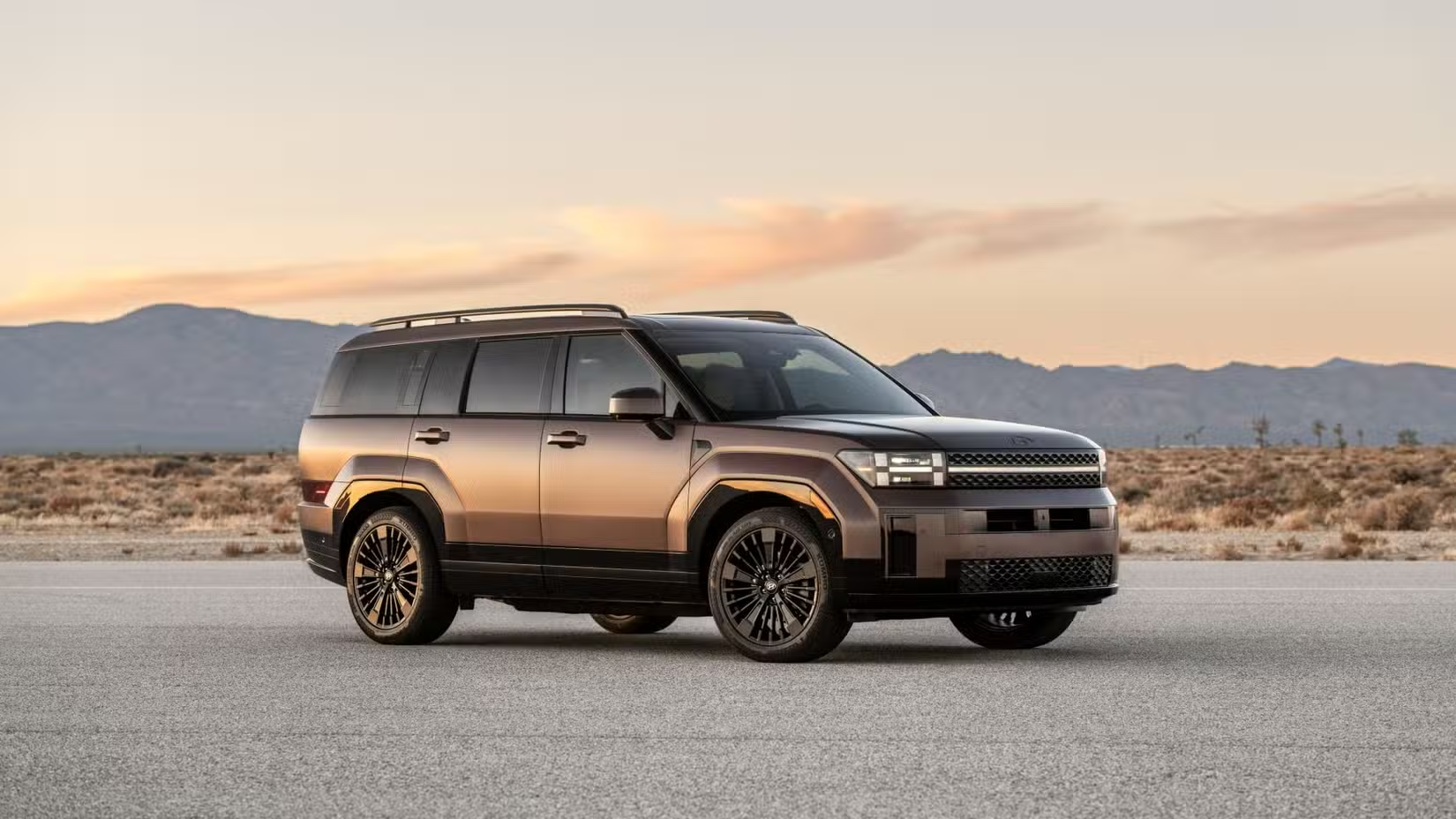
In a significant safety development, Hyundai Motor Company has announced a recall of 135,386 Santa Fe SUVs due to a potential fire hazard linked to an improperly installed terminal cover on the starter motor.
According to recall documents filed with the National Highway Traffic Safety Administration (NHTSA), certain 2024 and 2025 non-hybrid Santa Fe models equipped with the 2.5-liter turbocharged four-cylinder engine are affected. The issue stems from a cover that may not be properly seated over the “B+” terminal of the starter motor. In the event of a collision, deformation in the engine compartment could cause the uncovered terminal to contact the cooling fan assembly, resulting in an electrical short and potentially causing a fire.
The recall notice explains that the problem was identified during internal testing. “We are aware of a single New Car Assessment Program (NCAP) test where the issue resulted in a fire,” Hyundai said. “However, there have been no field reports or real-world incidents related to this concern so far.”
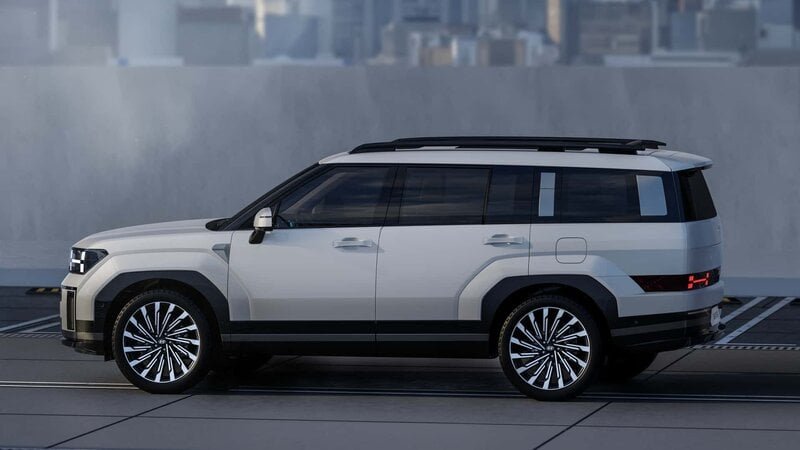
Starting December 1, 2025, Hyundai will begin notifying both owners and dealers. Affected vehicle owners will be asked to bring their SUVs to an authorized Hyundai dealership, where technicians will inspect and, if necessary, reinstall the starter motor terminal covers at no cost.
Owners who suspect their vehicle might be part of the recall can verify by entering their Vehicle Identification Number (VIN) on the official NHTSA recall lookup page.
This latest recall adds to the growing list of fire-related concerns across the auto industry, where components exposed to extreme heat or improper assembly have led to widespread safety campaigns. Hyundai, in particular, has faced scrutiny over electrical system faults in previous models, though the company maintains that customer safety remains its top priority.
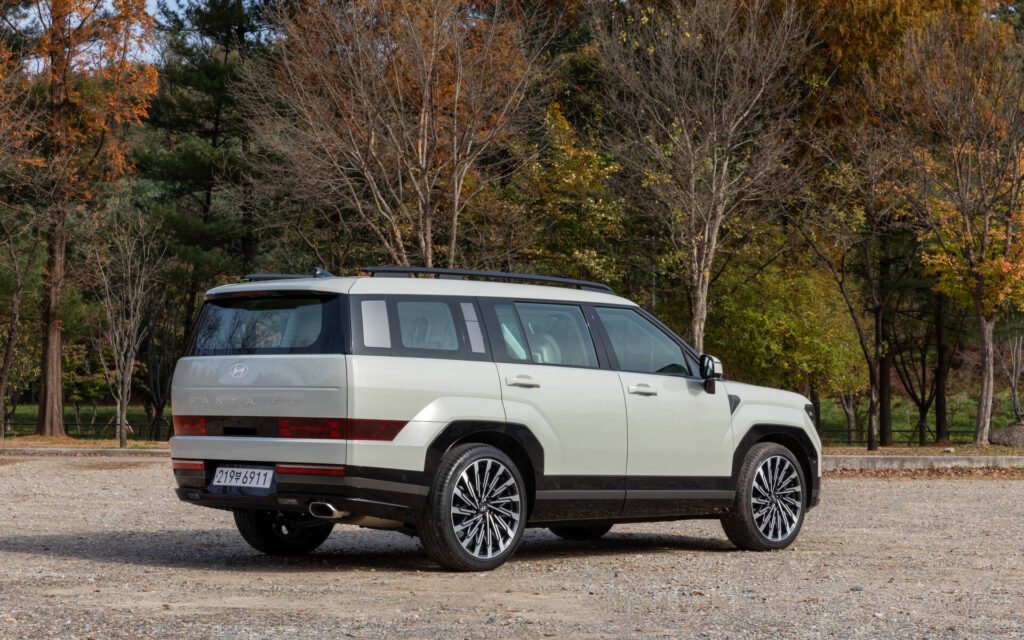
Experts say that while such recalls can be inconvenient, they’re critical for ensuring long-term safety. “A recall like this isn’t just about fixing a mechanical issue—it’s about maintaining consumer trust,” said John Nielsen, an automotive safety expert.
As Hyundai continues to expand its SUV lineup and ramp up production of hybrid and electric models, ensuring component reliability will remain a focal point. For now, owners are advised to park recalled vehicles away from structures and schedule inspection appointments as soon as they receive official communication.
For more Update http://www.dailyglobaldiary.com
Automobile
Ferrari Unveils Its First Electric Car ‘Elettrica’ — But Pulls Back on Full EV Ambitions
The iconic Italian automaker says petrol and hybrid engines will still power most of its lineup through 2030, even as it reveals the groundbreaking Elettrica.
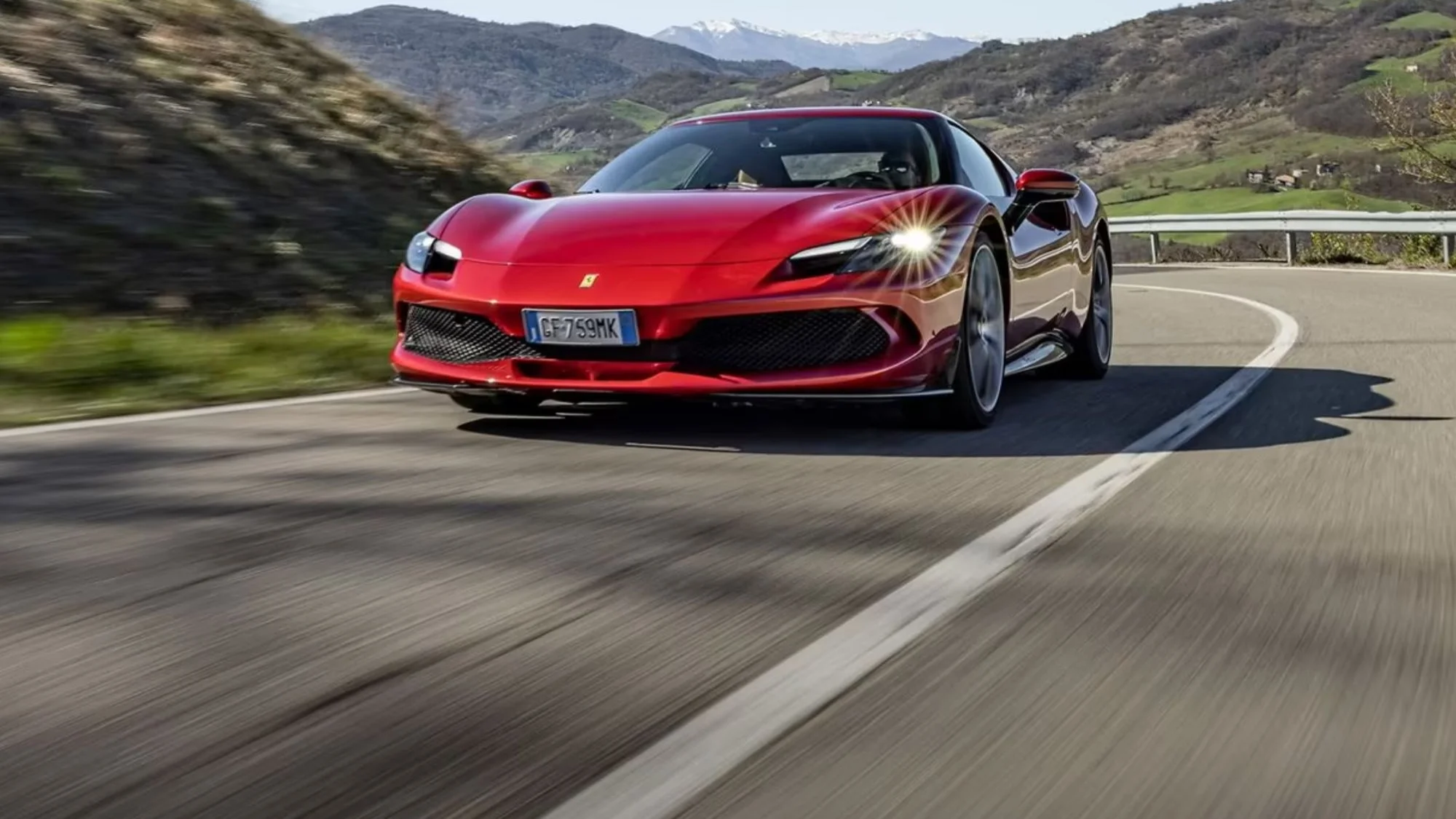
In a move that blends heritage with modern innovation, Ferrari has officially revealed the technology behind its first-ever electric car, named Elettrica, while subtly dialing down its aggressive plans for complete electrification.
During a presentation at its Maranello headquarters in northern Italy, the luxury carmaker showcased the Elettrica’s production-ready chassis — a bare frame housing the battery pack and electric motors, though without wheels or body panels. The stripped-down reveal offered enthusiasts and investors a glimpse into Ferrari’s engineering prowess while signaling the brand’s measured approach to entering the EV era.
However, Ferrari also confirmed it’s revising its 2030 electrification targets. The new plan envisions a lineup made up of 40% internal combustion engine (ICE) models, 40% hybrids, and only 20% fully electric cars. This marks a notable shift from its 2022 roadmap, which had projected the opposite — 40% EVs and 20% ICE models by 2030.
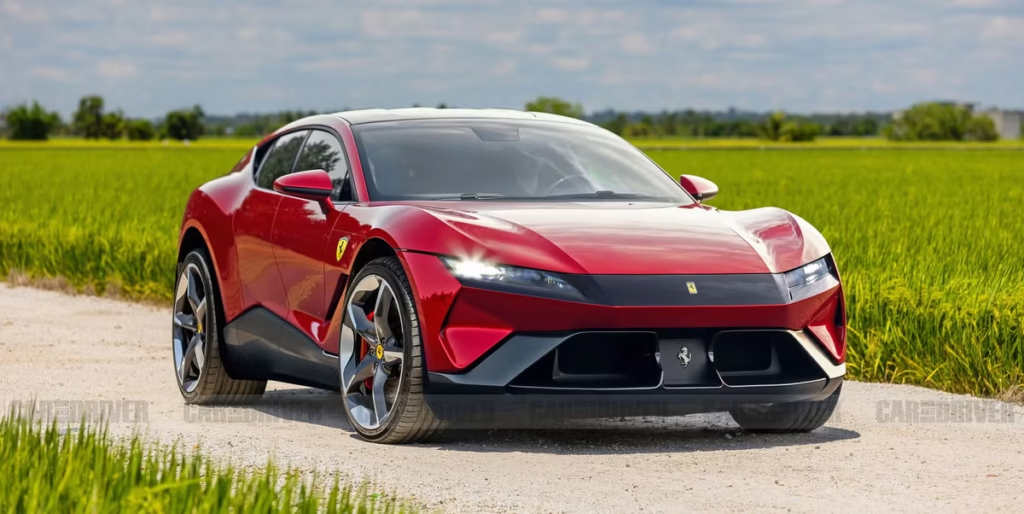
Speaking at the event, John Elkann, Chairman of Ferrari, said:
“With the new Ferrari Elettrica, we once again affirm our will to progress by uniting the discipline of technology, the creativity of design, and the craft of manufacturing.”
The Elettrica, which will officially go on sale next year, is being developed entirely in-house. All its key electric components — including high-voltage battery packs, e-axles, and inverters — are being designed and manufactured within Ferrari’s state-of-the-art “E-Building” facility in Maranello.
Despite this technological milestone, Ferrari isn’t rushing into the electric future. Sources familiar with the company told Reuters that Ferrari doesn’t plan to release a second EV until after 2028, citing the slow demand for ultra-high-performance electric luxury cars.
Meanwhile, Ferrari remains focused on what it does best — precision engineering and customer exclusivity. Between 2026 and 2030, the automaker plans to launch an average of four new models each year, continuing the product cadence that keeps its elite clientele constantly engaged.
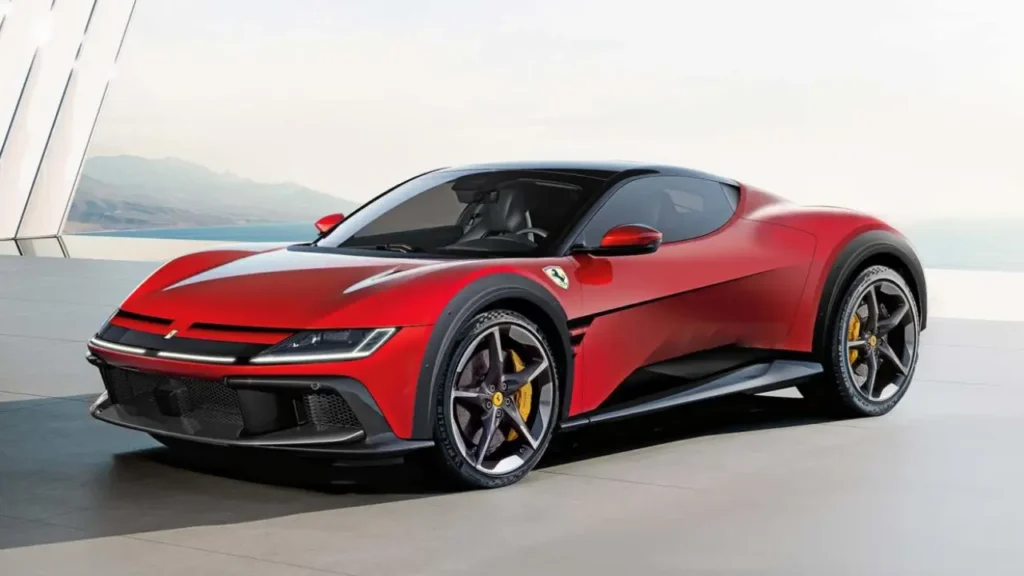
Beyond cars, Ferrari is expanding its lifestyle and luxury ecosystem. The brand’s active client base has grown nearly 20% since 2022, now reaching around 90,000 owners globally. To enhance customer experience, Ferrari will open new Tailor Made Centers in Tokyo and Los Angeles by 2027 — allowing clients to personalize their supercars to an unparalleled level.
In addition, Ferrari is doubling down on its luxury lifestyle presence with new flagship stores in London and New York set to open in 2026. The company is also planning to expand its portfolio of premium merchandise, fashion lines, and experiential events to connect with fans beyond the track.
As the global auto industry accelerates toward electric mobility, Ferrari’s approach stands out — a slow but deliberate drive into the future without abandoning the emotional power of its roaring combustion engines. For Ferrari enthusiasts, that may be the perfect balance between innovation and tradition.
For more Update http://www.dailyglobaldiary.com
Business
Ford CEO Jim Farley warns EV sales could plunge by 50% as $7,500 tax credit ends…
The end of federal incentives may slash U.S. electric vehicle sales in half, forcing Ford and rivals to rethink their EV strategies.

Ford Motor Company CEO Jim Farley has delivered one of the starkest warnings yet for the U.S. electric vehicle (EV) market, saying demand could collapse by nearly 50% once federal tax incentives disappear.
Speaking at Ford’s “Pro Accelerate” event in Detroit on Tuesday, Farley said EV sales, which are currently hovering around a record 10–12% of the U.S. auto market, could sink to just 5% starting next month.
“We’re going to find out in a month. I wouldn’t be surprised if EV sales in the U.S. go down to 5%,” Farley said.
The policy shift
The forecast comes as the $7,500 federal EV incentive ends under the Trump administration’s “One Big Beautiful Bill Act.” The legislation removed blanket EV subsidies but added perks for vehicles assembled in the U.S., regardless of whether they are electric or combustion-based.
The policy change is already altering consumer behavior. Cox Automotive projects EV sales hit a record 410,000 units in Q3 2025, a 21% jump year-on-year, as buyers rushed to take advantage of the expiring credit. But analysts expect demand to slump once the incentive is gone, with many buyers effectively “pulling forward” their purchases.
Expensive cars, cautious buyers
Farley was blunt about the challenge facing automakers:
“Customers are not interested in the $75,000 electric vehicle. They find them interesting. They’re fast, they’re efficient, you don’t go to the gas station, but they’re expensive.”
Ford currently sells models like the F-150 Lightning, which can top $90,000, and the Mustang Mach-E, a crossover positioned against rivals from Tesla and Hyundai. But Farley noted that customers seem more comfortable with hybrids and “partial electrification” for now, calling them “easier for customers to accept.”
Industry-wide ripple effects
The uncertainty could have major consequences for automakers’ massive EV investments. Ford has spent billions on EV development and battery plants across the U.S., but Farley acknowledged those facilities may now face “more stress.”
“We’ll fill them, but it will be more stress, because we had a four-year predictable policy. Now the policy changed. We all have to make adjustments,” he said.
The broader industry is watching closely. Tesla, General Motors, and Hyundai have all banked on rapid EV adoption to justify their expansion plans. The sudden shift could force a rethink in pricing, production, and supply chain strategies.
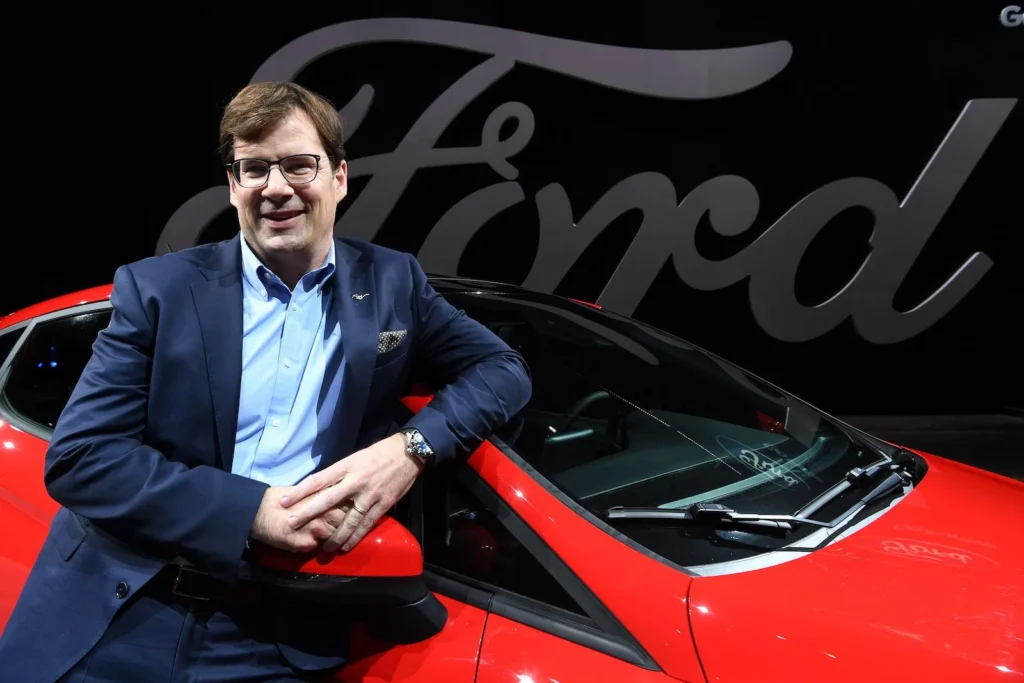
Skilled trades and the “essential economy”
Farley’s comments came during a Ford-hosted discussion on skilled labor and education. The event drew executives and public officials who emphasized the need for training workers to support both traditional auto manufacturing and the emerging EV ecosystem.
While Farley expressed optimism that EVs will remain “a vibrant industry,” he admitted it will be “way smaller than we thought,” at least in the near term. For automakers, the message is clear: the road to electrification just got a lot bumpier.
For more Update http://www.dailyglobaldiary.com
Automobile
Tesla Model Y Performance shocks with speed upgrades but do families really need a 460bhp SUV?
The revised Model Y Performance brings blistering acceleration, sharper suspension, and subtle design tweaks—but critics ask if it makes sense for the average family buyer.
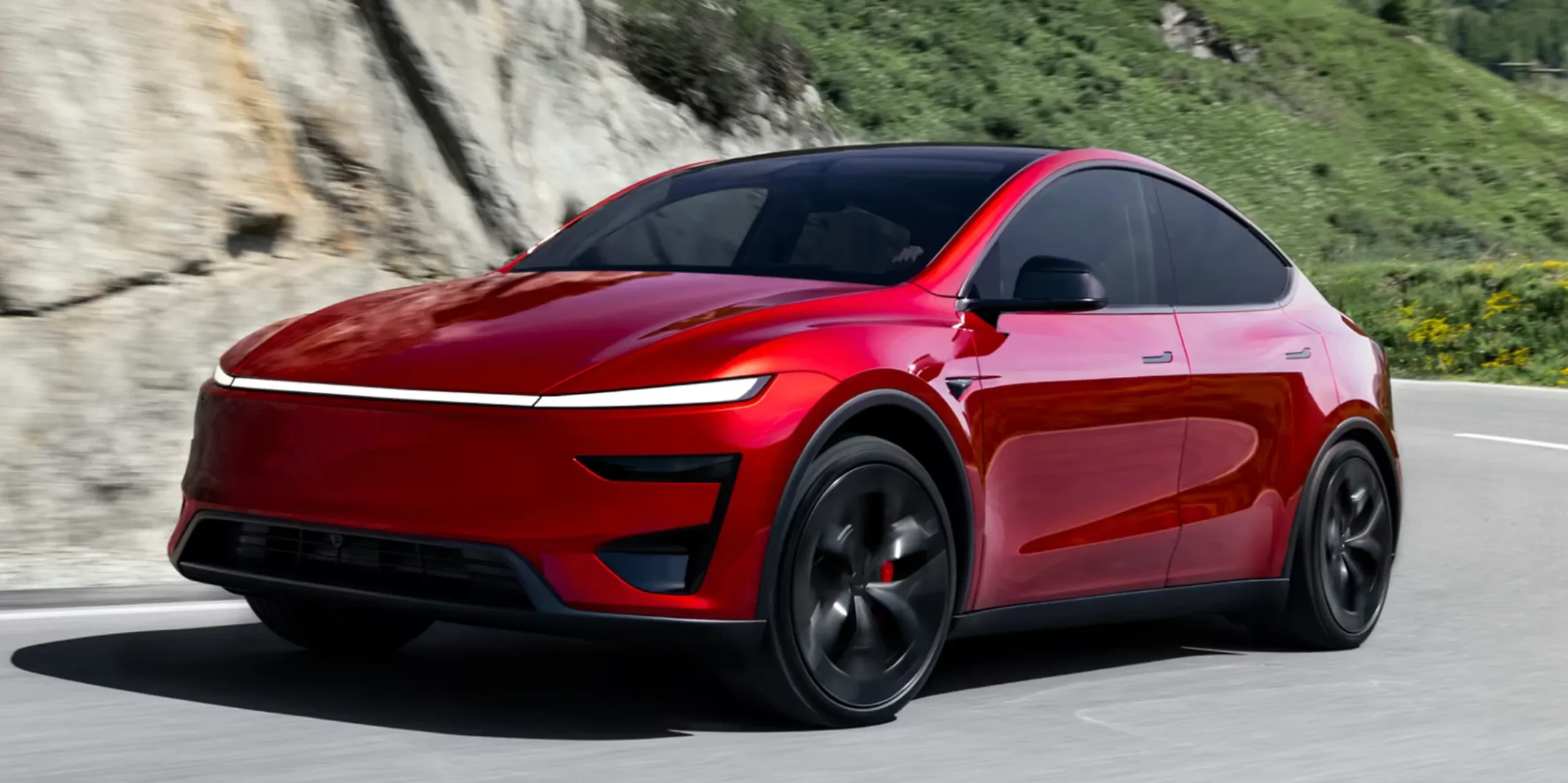
When Tesla announced the revised Model Y Performance, many assumed it would simply be another power bump on an already rapid electric SUV. On paper, it is: 460bhp, 0-62 mph in 3.5 seconds, and the obligatory “Insane Mode” launch control. But look closer, and there’s more nuance—plus an open question: who exactly needs this much power in a family EV?
A power boost with hidden refinements
The Model Y Performance now uses the LG 5M battery pack borrowed from the Tesla Model 3 Performance. With 79kWh usable capacity, it manages to squeeze in more energy without extra weight, resulting in nearly the same efficiency as the Long Range AWD. Efficiency might not sound as sexy as acceleration, but it matters when you’re ferrying kids to school rather than sprinting down an autobahn.
Alongside the battery, engineers squeezed out 40 extra horsepower over the last version. In today’s EV arms race, that means a 0-62mph sprint in just 3.5 seconds—numbers once reserved for supercars. Stick it in “Insane” mode, and it will repeat that feat multiple times.

Subtle styling, serious aero tweaks
At first glance, the Model Y Performance doesn’t scream transformation. Yes, there’s a new bumper, 21-inch Arachnid 2.0 wheels, a carbon lip spoiler, and glossy black mirrors. But the real story is underneath: the aero work reduces lift by 64% and drag by 10%. Less lift means more stability at speed, while less drag is a welcome efficiency boost. And if you care about details, those flashy red brake calipers? Same as the AWD version—just painted red.
Cabin upgrades and comfort
Inside, Elon Musk’s team focused on refinement. The central touchscreen has grown slightly, now crisper with more pixels. Sportier seats get extra bolstering and electric thigh supports, while carbon trim dots the dashboard and door inserts. Rear passengers aren’t left behind: the 8-inch rear entertainment screen remains, as does the panoramic glass roof.
Noise, vibration, and harshness (NVH) levels have also been significantly improved. On smooth Swiss roads, testers reported cabin noise so low that you could “hear your passenger breathing.” That level of silence in an EV SUV is no small achievement.
Driving experience: intention over fun
Tesla didn’t just rely on raw power. The Y Performance gets adaptive suspension, revised bushings, and reinforced rear bracing. This means sharper handling and smoother ride control. It’s not a night-and-day difference compared to the Long Range AWD, but it does feel more deliberate, more focused. Still, the hefty weight makes quick direction changes less playful. The steering remains accurate but numb, and while braking is solid, it lacks feedback.
At 75% effort, though, the car feels exactly as intended—rapid, secure, and composed. Which, frankly, is what most families will want.
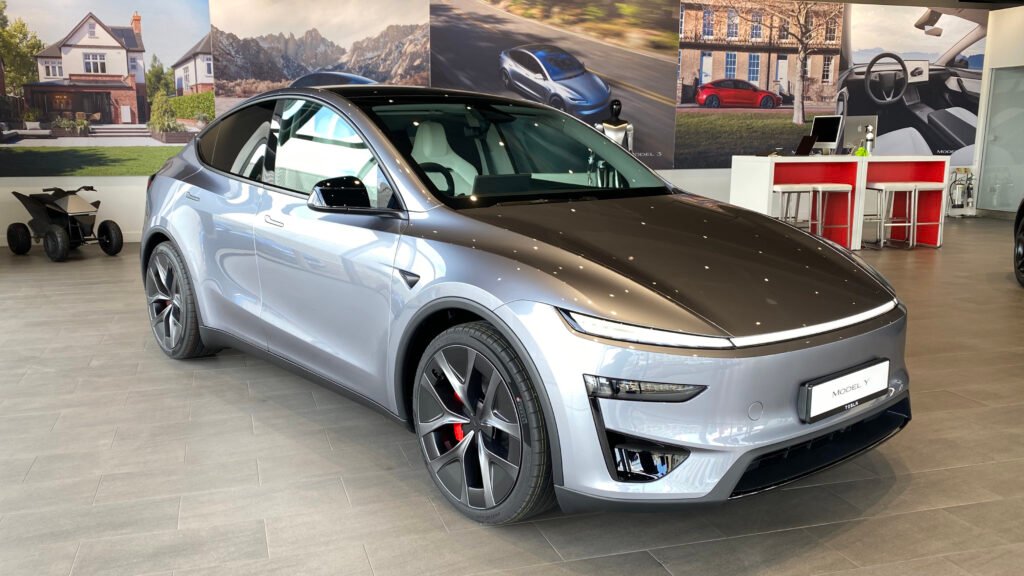
The question of need vs. want
Here’s the rub. The standard Model Y Long Range AWD already does 0-62mph in under five seconds, has slightly more range, and costs about £10,000 less. For daily driving, school runs, and road trips, it might actually be the better choice.
The Performance version feels like an indulgence—a family car with sports car numbers. But will you really unleash 460bhp with children and groceries on board? Probably not.
As one reviewer put it, “The Model Y Performance is brilliant, but it feels surplus to requirements.”
For more Update http://www.dailyglobaldiary.com
-

 Entertainment1 week ago
Entertainment1 week agoSurvivor Season 49 episode 2 shocker Kele tribe loses again and fans stunned by who went home
-

 Entertainment6 days ago
Entertainment6 days agoCharlie Hunnam reveals chilling transformation into serial killer Ed Gein for Ryan Murphy’s Monster… “I didn’t want to glamorize it”
-

 Sports1 week ago
Sports1 week agoTottenham’s Champions League wake-up call… why Spurs must stop looking like a Europa League side
-

 Sports6 days ago
Sports6 days agoShohei Ohtani finally pitches in MLB playoffs after 2,746 days… will this be the moment that defines Dodgers vs Phillies?
-

 Technology News1 week ago
Technology News1 week agoBitchat downloads skyrocket in Madagascar as protests erupt over water and power cuts… Jack Dorsey’s app becomes a lifeline
-

 Sports7 days ago
Sports7 days ago‘Silent killer’ Cam Schlittler stuns Red Sox as Yankees rookie makes history with 12 strikeouts
-

 Crime & Justice1 week ago
Crime & Justice1 week agoProsecutors demand 11 years for Diddy after shocking trial says Cassie’s testimony revealed dark truth
-

 Tech3 days ago
Tech3 days agoChatGPT Takes a Leap: Spotify, Canva, and More Integrated – Revolutionizing User Experience!


